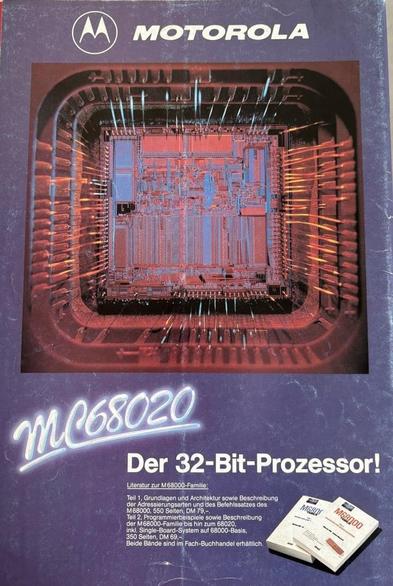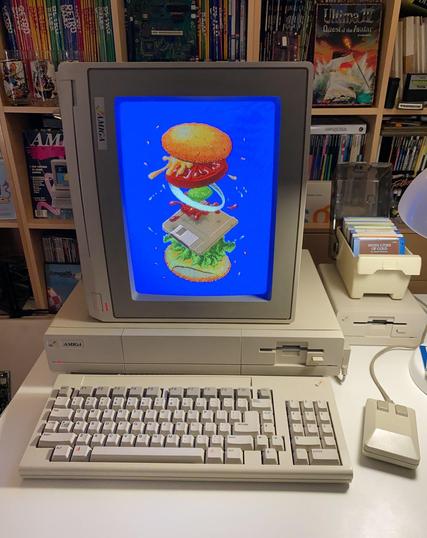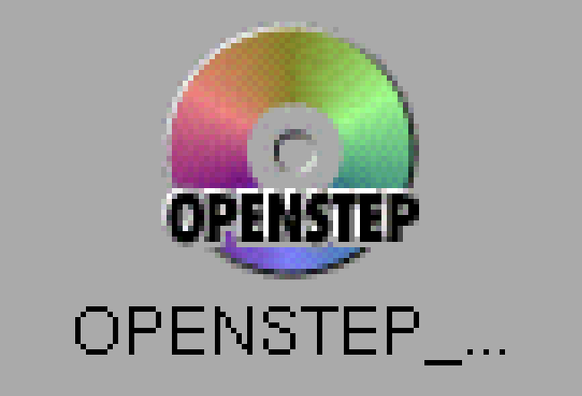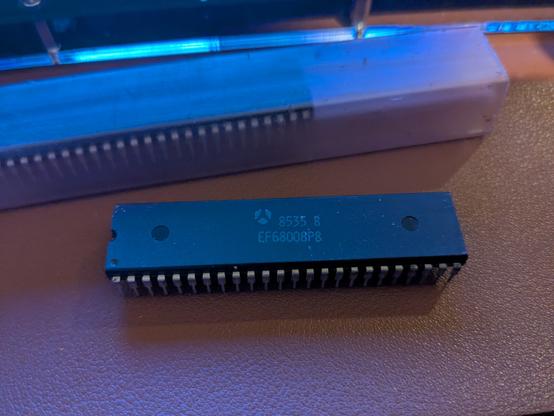Those were the days... Motorola prominently placed ads for the 68020 on the back cover of German computer magazines. This one from the 68000er/ST-Magazin August 1988 issue.
Forty years ago today, the Commodore Amiga 1000 was released to the world. With its unprecedented graphics & sound capabilities, powerful 16-bit CPU and custom chipset, and UNIX-like multitasking OS, the Amiga was a truly revolutionary system for its time. And, many are still in use to this day, with the platform seeing new software and hardware development from month to month.
I presently have three, myself. :-)
Happy 40th, Amiga!
#Amiga #CommodoreAmiga #vintagtecomputing #retrocomputing #retrocomputers #computinghistory #computers #MC68K #AmigaDOS #AmigaOS #tech #technews #vintagetech
I am looking for an Amiga 2000 CPU accelerator that features a physical enable/disable switch.
Anyone have one sitting around they're looking to sell? I'm using a 68020 accelerator now, so anything would be faster.
#Amiga #Amiga2000 #hardware #vintagecomputing #retrocomputing #retrocomputers #accelerators #CommodoreAmiga #MC68K #Motorola
Playing Rogue for the Mac.
. . .
#Rogue #Mac #Macintosh #macgaming #retrogaming #Epyx #Atari #AtariST #Spectre #MagicSac #emulation #vintagecomputing #retrocomputing #retrocomputers #CRT #MC68K #video #setups #vintageapple #games #roguelikes #ByteCellar
Hyperion releases AmigaOS 3.2.3, here in 2025. [The Register]
https://www.theregister.com/2025/04/10/amigaos_3_2_3/
#Amiga #AmigaOS #AmigaDOS #vintagecomputing #retrocomputing #Workbench #MC68K #Commodore #HyperionEntertainment #news #technews #OS #tech #blog
Thinking of NEXTSTEP this morning...I'd guess many aren't aware of the unusual color display arrangement.
The NeXTstation, which was the first "affordable" color solution for NEXTSTEP, has a 16-bit framebuffer, but instead of rendering the desktop in 65,536 colors (as per Windows or Mac hardware, say), it rendered in 12-bit color with 4-bits of alpha channel (transparency).
That means it had a palette of 4096 colors, with all colors available at once on the display (not like, say, the Amiga or Apple IIgs with a 4096 color palette, but video modes with a small subset of those colors available (yes, yes, HAM mode excluded). Additionally, anything on the screen had 16 levels of opacity available.
It's interesting to see in person, on the actual hardware (especially on a good LCD display). With dithering, it looks very close to 24-bit truecolor.
(The NeXT Dimension color board for the Cube allowed 24-bit color with 8-bits alpha, but that was not so frequently used -- less so than most NeXT hardware even...)
But that's not nearly the weirdest that NEXTSTEP-capable hardware got, when it came to color video display...
#NeXT #NEXTSTEP #NeXTstation #NeXTCube #OS #OpenStep #DisplayPostScript #PostScript #GUI #UNIX #MC68K #vintagecomputing #retrocomputing #computinghistory #SteveJobs #tech
Il va falloir que je fasse quelque chose avec ça !
#mc68k
Here's a pretty thing that came in the mail today.
#MC68010 #Motorola #vintagecomputing #retrocomputing #CPU #retrocomputers #tech #vintagetech #SoC #desk #photo #ceramic #gold #MC68K #ByteCellar
@techokami @koakuma @stman @geerlingguy MC is the prefix for #Motorola Chips.
@koakuma @techokami also #UltraSparcT2 as cool as it was at release (including dual 10Gbit-NICs and hardware RNG on die) has a lot of things noone would want to deal with in 2024 (i.e. DDR2-FBDIMMs).
- Plus #RISCv unlike #SPARCv9 amd #OpenPOWER was designed on a clean slate in academia by people who had dealt with #RISC & #CISC architectures and needed something #OpenSource as they can't just violate NDAs nilly-willy for teaching.
Pretty shure @stman could write an entire curriculum on why #SPARC, #PowerPC, #s390x and even #ARM / #ARM64 should not be pursued and why #mc68k died alongside the unfixable-by-design mess that is #ix86 & #amd64.
- Plus RISCv's ISA has been an #OpenStandard from the get go, whereas the efforts by #Oracle nee #Sun and #IBM were mostly done in reaction to it and to keep the few invested licensees and co-designers onboard and not drop the platform entirely...
Look, I'd love to get my hands on some Sun SPARC Hardware but aside from making my room hot and noisy there isn't much to justify blowing likely over half a Euro per hour (electricity price: € 0,40/kWh) just to have it up and running, as compared to a #PiCluster like those @geerlingguy had built multiple times are more practical.
- For comparison: It's like driving a 2011 Ford CVPI-71 with a 11,9l SONNY'S SAR-729 engine for commuting from Leverkusen to Köln when there's ample of affordable, reliable and fast public transport that gets me faster from Opladen to Deutz than it takes to drive up the 15th deck of a parking garage just to find a spot to park that 5,7m long street yacht where one can climb out of it from the doors and not the trunk!
And that's just bottom-billing, low-cost ARM SoC tech designed for a price tag (to the point that until the #Pi5 they neither included a power button nor #RTC onboard!
- OFC RISC-V is still 5-25+ years behind #ARMv9 solely based off #patents, #budget and #PersonnelHours invested in it, so it's barely getting on-par with 10-20yr old ARM devices in terms.of power and support.





